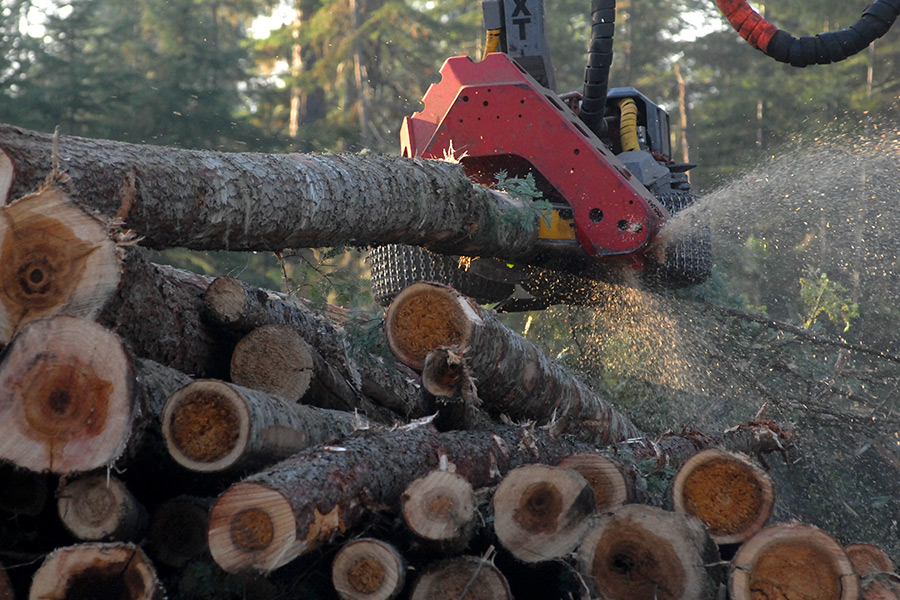A federal judge has halted a logging project near Lindbergh Lake in the Swan Valley, siding with conservation groups that argued the U.S. Forest Service had disobeyed environmental laws.
U.S. District Judge Donald Molloy on Thursday blocked the Glacier Loon Timber Sale, saying the Forest Service violated the Endangered Species Act by failing to follow necessary procedures for protecting wolverines after discovering the species could be affected by logging operations. Molloy also described the agency’s “no effect” determination for bull trout and water howellia as “arbitrary and capricious.” He stopped the Nature Conservancy from logging former Plum Creek lands until further environmental analysis is conducted.
» Click here to read the judge’s ruling.
Four conservation groups — Alliance for the Wild Rockies, Swan View Coalition, Friends of the Wild Swan and Native Ecosystems Council — sued to halt the sale in June 2013. The groups claimed the project would harm grizzly bear, lynx, wolverine and other species and plants while damaging the forest’s remaining old growth.
“More logging roads leads to more dead grizzly bears and less elk. Most grizzly bears are killed near roads and roads lead to a decline in elk numbers,” Mike Garrity, executive director of the Alliance for the Wild Rockies, said. “The Swan Valley has seen elk numbers decline as logging has increased. It is time to say no to more road building and clearcuts.”
The Glacier Loon project includes 37,320 acres and extends south and west of Condon on the west side of Montana Highway 93 to the south end of Lindbergh Lake. The area has been logged in the past, with more than 10,000 acres of forest being clear-clut since 1950, according to the environmental groups.
The timber sale was estimated to produce roughly 6.7 million board feet of commercial timber while treating 337 acres with pre-commercial thinning.
The project is within a section of land stretching 111,740 acres that was acquired in 2009 by the Forest Service and previously owned by The Nature Conservancy, which received a $250 million tax refund for the land.
According to the Forest Service, the project was intended to improve and maintain healthy forest stands and to prevent insect and disease infestations and to provide timber for commercial use.
Nearly six miles of temporary road construction was part of the project, while 8.4 miles of National Forest System road was to be closed or decommissioned.
The project area is within the designated “grizzly recovery zone” of the Northern Continental Divide Ecosystem. It is also considered critical habitat for other species listed under the ESA, including bull trout.
The Forest Service published its Environmental Assessment in August 2012 and concluded that the Glacier-Loon Timber Sale would have no effect on grizzly bears, Canada lynx, bull trout, bull trout critical habitat and water howellia, a threatened plant species under the ESA. The agency did determine the project may impact the wolverine population.
Molloy disagreed with numerous challenges brought by the conservation groups, but the judge did say the Forest Service’s determination that water howellia and bull trout would not be affected was “arbitrary and capricious,” and “the Forest Service failed to follow the necessary procedures under the ESA after reaching a ‘may affect’ conclusion for the wolverine.”
“Further, the Forest Service applied the incorrect standard under Amendment 19, requiring it to reconsider its Section 7 analysis of grizzly bear under the numerical access objectives in the Forest Plan,” Molloy wrote.
The judge ordered the project be stopped and said these Forest Service lands have to be managed under federal environmental laws to protect native species just like all other national forests, Garrity said.
“It’s unfortunate that we had to once again take the federal government to court to force them to follow the law,” Garrity said. “We had no other choice if we want to conserve the last remaining habitat for bull trout, grizzly bears, lynx and other old growth dependent wildlife since the Forest Service insists on being serial law breakers.”
In August, Molloy halted a timber sale in the Stillwater State Forest. Molloy concluded that the U.S. Fish and Wildlife Service violated the ESA by approving the state plan and issuing a permit to the state Department of Natural Resources and Conservation (DNRC) that would have allowed the agency to potentially harm grizzly bears in the Stillwater Core.
